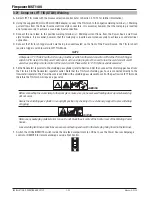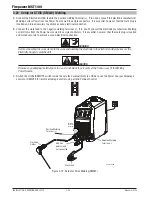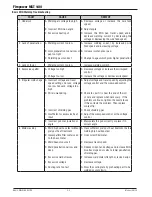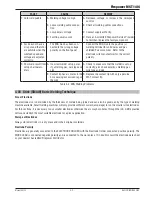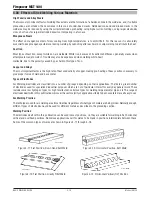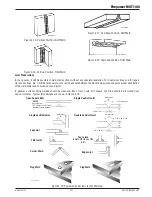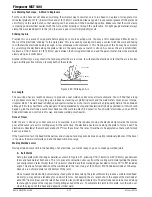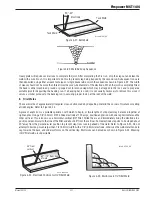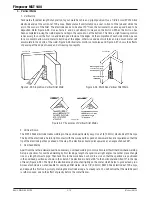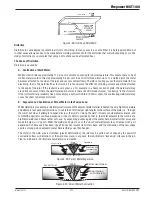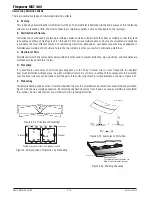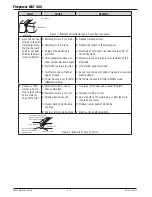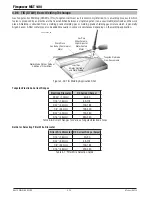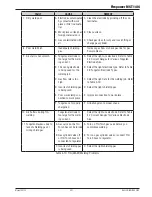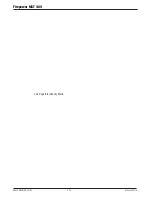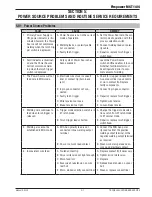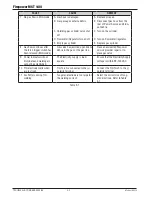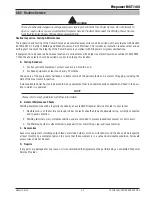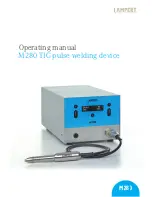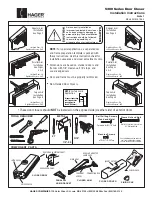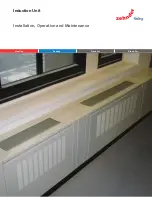
Firepower MST 140i
BASIC WELDING GUIDE
4-12
Manual 0-5338
Arc Welding Technique - A Word to Beginners
For those who have not yet done any welding, the simplest way to commence is to run beads on a piece of scrap plate. Use
mild steel plate about 1/4" (6.4mm) thick and a 1/8"(3.2mm) electrode. Clean any paint, loose scale or grease off the plate and
set it firmly on the work bench so that welding can be carried out in the downhand position. Make sure that the work clamp
is making good electrical contact with the work, either directly or through the work table. For light gauge material, always
clamp the work lead directly to the job, otherwise a poor circuit will probably result.
Striking the Arc
Practice this on a piece of scrap plate before going on to more exacting work. You may at first experience difficulty due to
the tip of the electrode "sticking" to the work piece. This is caused by making too heavy a contact with the work and failing
to withdraw the electrode quickly enough. A low amperage will accentuate it. This freezing-on of the tip may be overcome
by scratching the electrode along the plate surface in the same way as a match is struck. As soon as the arc is established,
maintain a 1/16"(1.6mm) to 1/8"(3.2mm) gap between the burning electrode end and the parent metal. Draw the electrode
slowly along as it melts down.
Another difficulty you may meet is the tendency, after the arc is struck, to withdraw the electrode so far that the arc is broken
again. A little practice will soon remedy both of these faults.
Art # A-10368
1/16" (1.6mm)
Figure 4-20: Striking an Arc
Arc Length
The securing of an arc length necessary to produce a neat weld soon becomes almost automatic. You will find that a long
arc produces more heat. A very long arc produces a crackling or spluttering noise and the weld metal comes across in large,
irregular blobs. The weld bead is flattened and spatter increases. A short arc is essential if a high quality weld is to be obtained
although if it is too short there is the danger of it being blanketed by slag and the electrode tip being solidified in. If this should
happen, give the electrode a quick twist back over the weld to detach it. Contact or "touch-weld" electrodes such as E7014
Stick electrodes do not stick in this way, and make welding much easier.
Rate of Travel
After the arc is struck, your next concern is to maintain it, and this requires moving the electrode tip towards the molten
pool at the same rate as it is melting away. At the same time, the electrode has to move along the plate to form a bead. The
electrode is directed at the weld pool at about 20º from the vertical. The rate of travel has to be adjusted so that a well-formed
bead is produced.
If the travel is too fast, the bead will be narrow and strung out and may even be broken up into individual globules. If the travel
is too slow, the weld metal piles up and the bead will be too large.
Making Welded Joints
Having attained some skill in the handling of an electrode, you will be ready to go on to make up welded joints.
A. Butt Welds
Set up two plates with their edges parallel, as shown in Figure 4-21, allowing 1/16"(1.6mm) to 3/32"(2.4mm) gap between
them and tack weld at both ends. This is to prevent contraction stresses from the cooling weld metal pulling the plates
out of alignment. Plates thicker than 1/4" (6.4mm) should have their mating edges beveled to form a 70º to 90º included
angle. This allows full penetration of the weld metal to the root. Using a 1/8"(3.2mm) E7014 Stick electrode at 100 amps,
deposit a run of weld metal on the bottom of the joint.
Do not weave the electrode, but maintain a steady rate of travel along the joint sufficient to produce a well-formed bead.
At first you may notice a tendency for undercut to form, but keeping the arc length short, the angle of the electrode at
about 20º from vertical, and the rate of travel not too fast, will help eliminate this. The electrode needs to be moved along
fast enough to prevent the slag pool from getting ahead of the arc. To complete the joint in thin plate, turn the job over,
clean the slag out of the back and deposit a similar weld.
Summary of Contents for MST 140i
Page 6: ...This Page Intentionally Blank ...
Page 76: ...Firepower MST 140i BASIC WELDING GUIDE 4 24 Manual 0 5338 This Page Intentionally Blank ...
Page 82: ...Firepower MST 140i KEY SPARE PARTS 6 2 Manual 0 5338 6 02 Power Source Art A 12518 31 ...
Page 86: ...Firepower MST 140i KEY SPARE PARTS 6 6 Manual 0 5338 This Page Intentionally Blank ...
Page 87: ...Firepower MST 140i Manual 0 5338 1 APPENDIX APPENDIX This Page Intentionally Blank ...
Page 89: ...Firepower MST 140i Manual 0 5338 3 APPENDIX Art A 12517 ...

